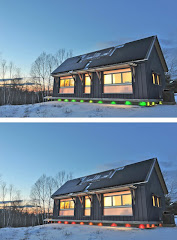Green technology is generating more media buzz by the day. Two recent articles have caught my attention, both because of their content, and because they are in mainstream publications aimed a general, albeit upscale, audience.
The first article is by Robert F. Kennedy Jr., son of the slain political leader and a prominent eco-activist, writing in Vanity Fair. The link is here: http://www.vanityfair.com/politics/features/2008/05/rfk_manifesto200805
RFK Jr. argues for the federal government to underwrite a an alternative energy infrastructure, including building a nationwide High Voltage Direct Current (HVDC) power transmission network. Although HVDC may seem arcane, it actually addresses one of the major impediments to switching to alternative sources of energy, namely that the best places for capturing sun power or wind power tend to be remote from the population centers that use the energy. Alternating current (AC) power lines are cheaper to build and maintain, but over long distances lose much of the energy they transmit. Direct current (DC) power lines are more expensive, but lose much less energy over long distances. A HVDC network could bridge the gap between where sustainable energy is produced and where it is used.
RFK Jr. is putting an important idea out into the public discourse. Time will tell whether the idea gains traction. An alternative to HVDC, of course, is the local generation of energy near the point of use. Solar panels on each roof, wind generators in the back yard, etc. My guess is that we will see some of both strategies implemented over the next several years.
The second article that caught my eye this week was in the New Yorker (I'm addicted to the cartoons). Titled "The Island in the Wind", the article describes the Danish island of Samso, an island about the size of Nantucket with some 4300 inhabitants, who have become energy independent by switching to wind power. The link is here: http://www.newyorker.com/reporting/2008/07/07/080707fa_fact_kolbert
Actually, Samso Island is a now a small but steady energy exporter, producing more electricity than they use, and selling it to the mainland.
The islanders apparently made the switch to wind power without government support or subsidy of any kind, as a sort of community project. The wind turbines were all erected with private funds raised by the islanders themselves. Each turbine is owned by one or a group of investors, who get annual dividends based on the economic performance of the turbine they own.
A fascinating story in its own right, the achievements of the Samso Islanders make you think, "If a small population of rural, mostly agricultural residents can successfully switch to sustainable energy, what's our excuse?"
The article is also full of revealing anecdotes about how this small real world community has evolved in its use of energy under a sustainable regime. For example: the Samso Islanders have little interest in energy conservation. The local eco-activist, an island native proud of his neighbor's achievement of energy independence, becomes indignant when discussing the results of his attempts to persuade the community to conserve energy. Families that insulated their homes better, for example, would then heat more rooms in the winter, so that the net savings were always close to zero.
There is much more to glean from this article, and I will probably return to it for further insights in the future. I highly recommend that you take the time to read it.


2 comments:
BTW, NASA scientist James Hansen also recommended a new HVDC grid in a recent interview with Andrew Revkin of the NY Times. He makes the same point in this YouTube video:
http://www.youtube.com/watch?v=AymMqpax2Xk&feature=related
There is a new world wide web emerging right before our eyes. It is a global energy network and, like the internet, it will change our culture, society and how we do business. More importantly, it will alter how we use, transform and exchange energy. For more information, see http://www.terrawatts.com
Post a Comment